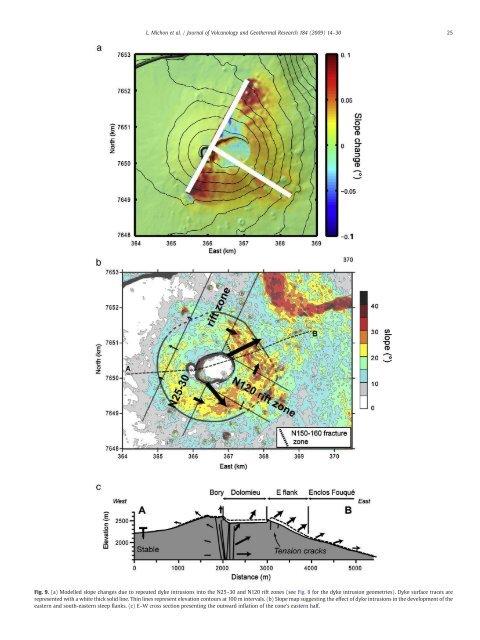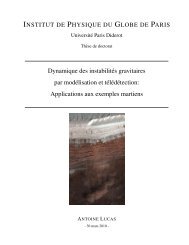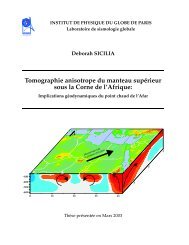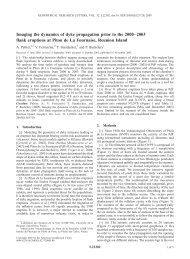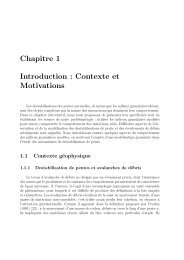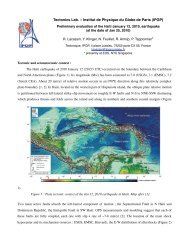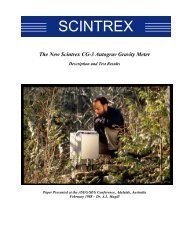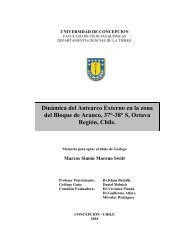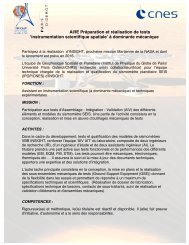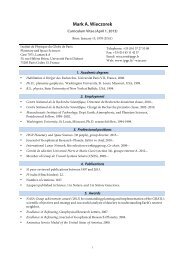Edifice growth, deformation and rift zone development in basaltic ...
Edifice growth, deformation and rift zone development in basaltic ...
Edifice growth, deformation and rift zone development in basaltic ...
Create successful ePaper yourself
Turn your PDF publications into a flip-book with our unique Google optimized e-Paper software.
L. Michon et al. / Journal of Volcanology <strong>and</strong> Geothermal Research 184 (2009) 14–30<br />
25<br />
Fig. 9. (a) Modelled slope changes due to repeated dyke <strong>in</strong>trusions <strong>in</strong>to the N25–30 <strong>and</strong> N120 <strong>rift</strong> <strong>zone</strong>s (see Fig. 8 for the dyke <strong>in</strong>trusion geometries). Dyke surface traces are<br />
represented with a white thick solid l<strong>in</strong>e. Th<strong>in</strong> l<strong>in</strong>es represent elevation contours at 100 m <strong>in</strong>tervals. (b) Slope map suggest<strong>in</strong>g the effect of dyke <strong>in</strong>trusions <strong>in</strong> the <strong>development</strong> of the<br />
eastern <strong>and</strong> south-eastern steep flanks. (c) E–W cross section present<strong>in</strong>g the outward <strong>in</strong>flation of the cone's eastern half.


